|
In the last post I talked about the first of the eleven students in two days; today: Reedsburg! Specifically, Quintessential Quilts in Reedsburg. Don't ask me why, but somehow I didn't get everyone's individual tuffets photographed. I hope to rectify that very soon! ......aaaaand I need to chase down the tuffets I failed to photograph. Coming soon I hope!
2 Comments
It's been a busy summer here in Wisconsin! This past Tuesday, we had a wonderful group of ladies who made some wonderful tuffets at Quilt-agious in Ripon. Such a fun group! Let's check out their tuffets one by one: Somehow I missed getting a photo of Sandy's tuffet from above. Time for me to hunt her down!
Next post: more tuffets, this time from Reedsburg! So remember that post where I said I'd talk about other backing topics? So here are some of my thoughts that aren't related to just figuring out the math. T-shaped backs I'm talking about backings that have two pieces of fabric running in one direction and another running perpendicular. Thusly: I can tell you that longarmers hate T-shaped backs. This is because of the warp and weft (or crosswise vs. lengthwise grain of the fabric). There is a little bit of stretch in the weft (crosswise, that is, selvedge to selvedge) grain of the fabric. When a longarmer is loading a quilt onto the frame, she has to work against gravity. That gravity is pulling down on the backing, which isn't actually attached to anything but a couple of roller bars on her frame. This means that the backing may sag and if it's sewn together in a T shape as illustrated above, it will sag weirdly. So, if you're sending your quilt to a longarmer, skip the t-shaped backing. In fact, if I were sending mine off, I would piece the back as little as possible. I know, I know, it's very popular to piece the back, and I'm not saying I wouldn't at all, but it does present possible issues when quilting on a longarm.
Wide backings Wide backings are a popular choice, but keep in mind that they are often not made from the same high quality greige goods your regular quilt shop fabric is made from. So, wide backings can also be hard to square and they can be squirrely. Sheets I also understand that longarmers aren't fans of using bedsheets as backings. this is because the thread count on sheets is often too high to easily quilt through. However, though I haven't used a sheet as a back before, once I scored a used duvet cover from Crate and Barrel for under ten bucks and used that as a backing and it was just fine. But, it wasn't really a sheet, and because it was Crate and Barrel, it was of reasonably high quality. Minky/Cuddle This is the super soft, furry stuff that is so wonderful to touch. Longarmers don't seem to mind minky fabric on the back of quilts. Remember that quilting stitches will really disappear into your quilt if you use minky fabric on the back, so if you're wanting to highlight the quilting on the back, minky might not be your best choice. A note about using minky: please don't use the yucky stuff they have at the discount fabric stores. That stuff feels okay (not as good as quilt shop Cuddle) but once you wash it, yuck. And contrary to popular belief, it isn't too bad to quilt with, as long as you use basting spray and not pins to baste. Quilting at home So all of the things above that I mentioned that longarmers aren't fans of? Well, they're often more do-able at home. If you're basting your quilt on a table or the floor, you don't have gravity working against you, and you're always going to be attaching the backing to the batting. No sag! The other thing about quilting from home is that you can deal more easily with things like pieced backs. Ah yes, quilting at home. That will be a whole new series! Happy quilting! This week I had four finishes. Three were at The Electric Needle and one was at my house. This is Cheryl from the class where she hadn't been able to finish due to her grandchild being born the day after class 1. We live near each other so she came over to finish her tuffet. Here's the top-down view: Today, the happy tuffeteers walked out into the insane humidity. This group had such variety! Everyone tried something different on their tuffet bottoms, too. I'll be scheduling another tuffet class at The Electric Needle soon. Be sure to follow me on Facebook for updates, or keep an eye on the calendar. * I probably have this spelled completely wrong. ** I have no idea if this is actually French Provençal. As some of you may know, I had a blog called My Feed Dogs Are Down for some time. I wasn't very good at updating it, but there were a few good posts. My plan is to migrate some of those over here on a semi-regular basis (read: as I remember to do it). I'll start with one of my more useful ones about backings. Depending on how easy or difficult the migration process is, I may or may not start with an introduction like this. I'll always tag them TBT, though, in case you need to know. I recently stumbled upon a question in a quilt group on Facebook asking, "How much fabric do I need to back a 6' x 8' quilt?" Instead of just giving an answer, I decided to write this post to teach her (and others) how to figure it out herself. Sort of a, "tell a quilter how much backing fabric she needs, help her with one project; teach a quilter how to figure it out herself, help her for all of her projects" situation. The first thing to do is take those numbers in feet and change them to inches. Instead of 6' by 8', we need to think of it as 72" by 96". Quilting fabric usually comes in widths ranging between 40 and 44 inches. I'm going to assume 40, because it's better to have too much than too little. If we double 40, we get 80. Since 80 is generously bigger than 72, she won't need to sew more than two widths of fabric together. So we know that we will need two times the longer dimension of the quilt, which is 96. So, if we double 96, we get 192 inches. Divide that by 36 (because there are 36 inches in a yard) and voila, we get 5.33 yards. Of course, because we don't want to have to be super precise, and because shops don't cut perfectly, and everything else, we need to increase that amount. So, I would advise her to buy 6 yards of fabric. This method works with larger quilts, too. If your shortest dimension is 90, you would simply sew three lengths of fabric together using the longer length multiplied by three (along with -- no kidding here -- about another yard of fabric to allow for cutting, sewing, and shrinkage).
Keep in mind that my method above is assuming she is doing her own quilting. If she is sending the quilt to a longarmer, she needs to add 8 inches to each dimension (most times the longarmer will describe this as "four inches on each side"). So in that case, we would be looking at a backing that needs to be 80 by 104. The 80 is okay in this case; we were assuming we would only get 40 inches of usable fabric when in reality we will probably get a little more. Plus, though I'm not a longarmer (and I don't even play one on tv), I think most can get by with a smidgin less than four inches all around. But we would still need to double the 104 number to come up with 208. Divide that by 36 and we get 5.778 yards. Personally, I'd probably still go with 6 yards, but if she wanted to be really safe, she could get 6 1/4 yards. So, that wasn't too painful, was it? I'll talk about wide backings and T-shaped backings in another post. It was a beautiful day yesterday, and it was a beautiful day to finish tuffets! Lynne and JoAnn finished these two beauties at Bungalow Quilting and Yarn in Ripon yesterday. I also couldn't resist doing a little shopping myself. I really love all of the fabric at Bungalow. If I lived closer, it would be very dangerous!
|
Archives
November 2017
Categories
All
|


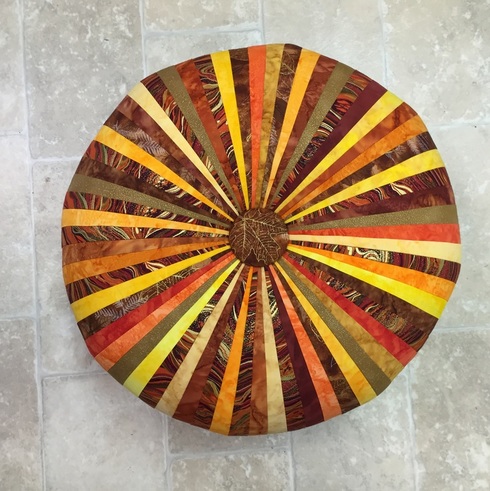
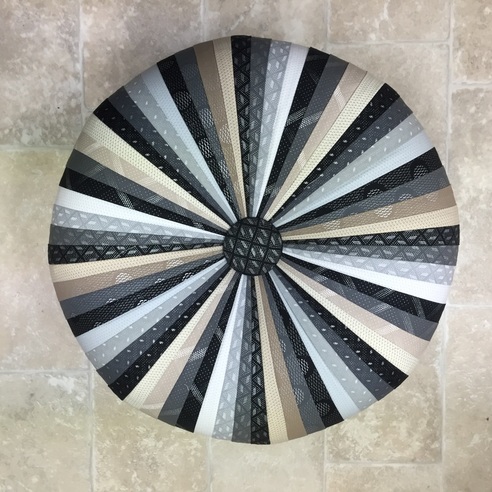
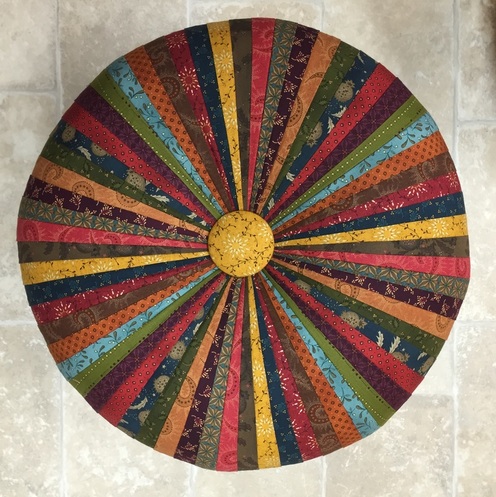

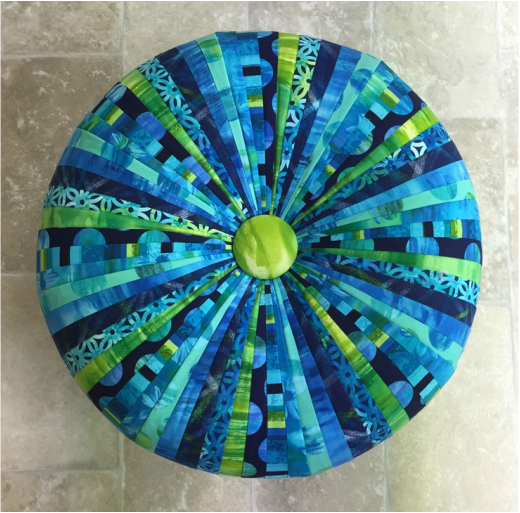
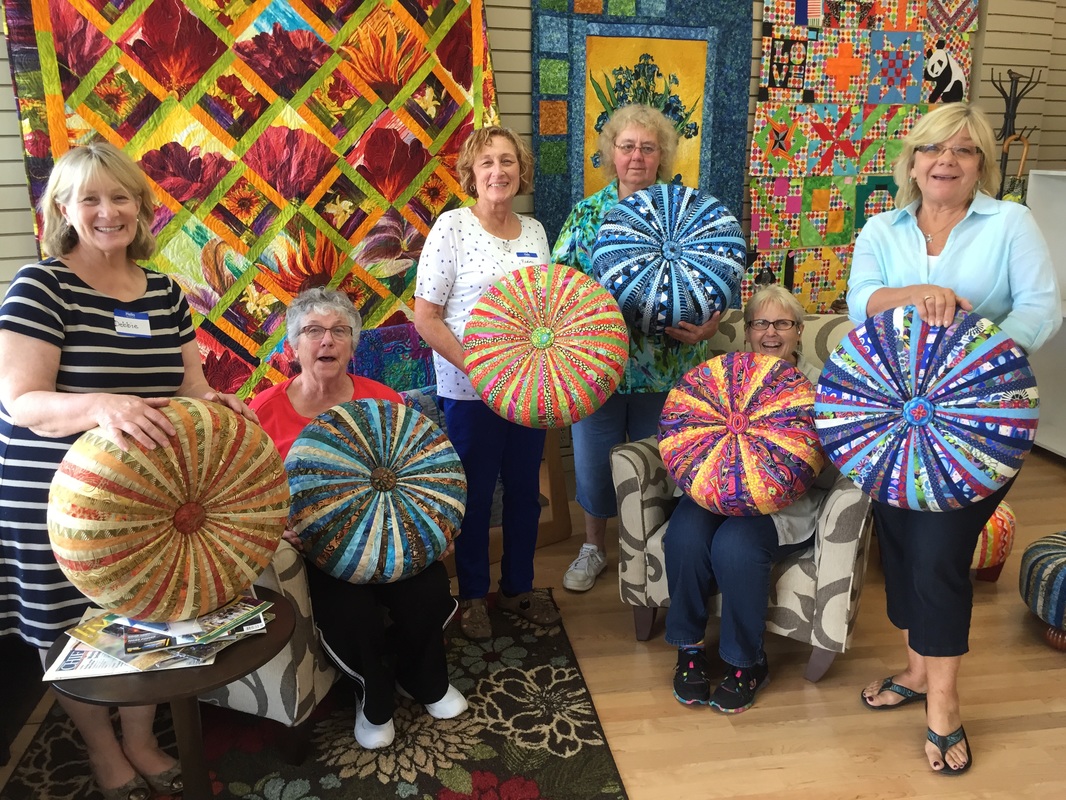
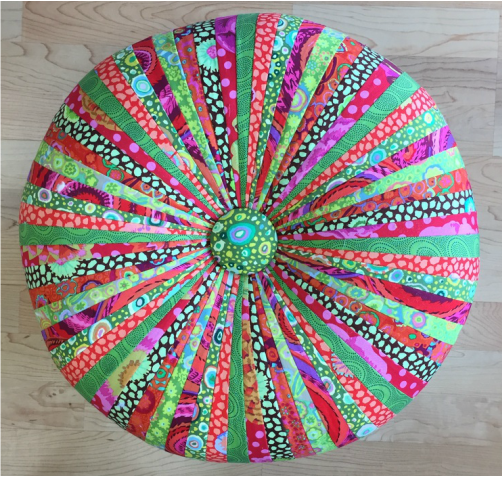
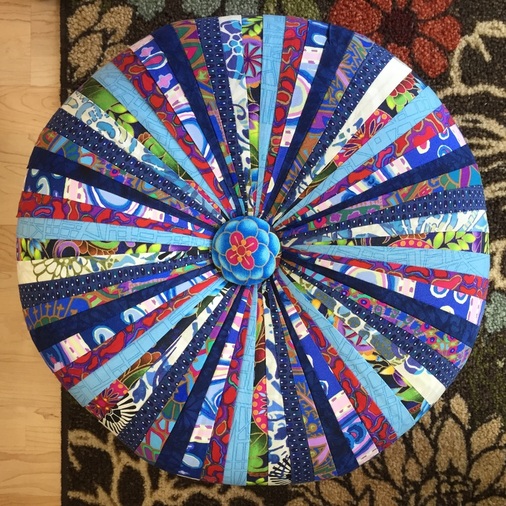

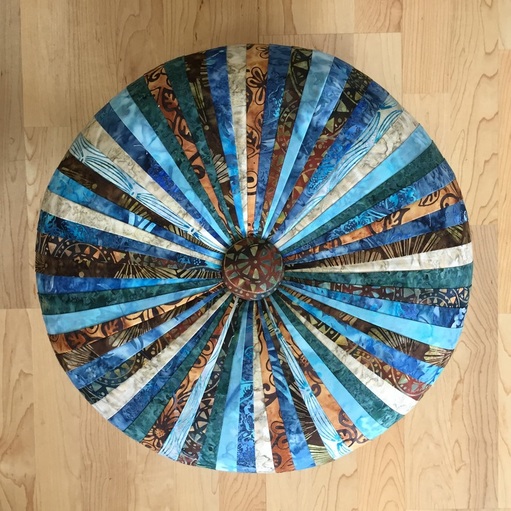





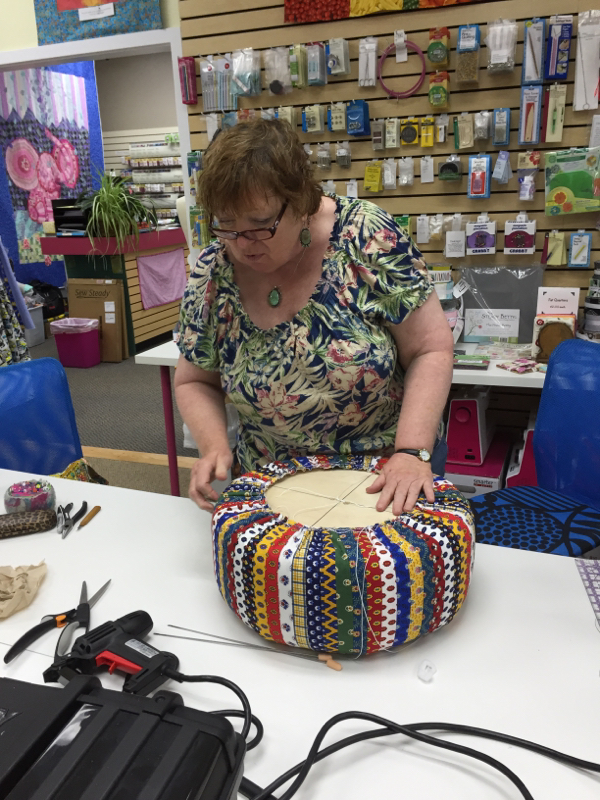

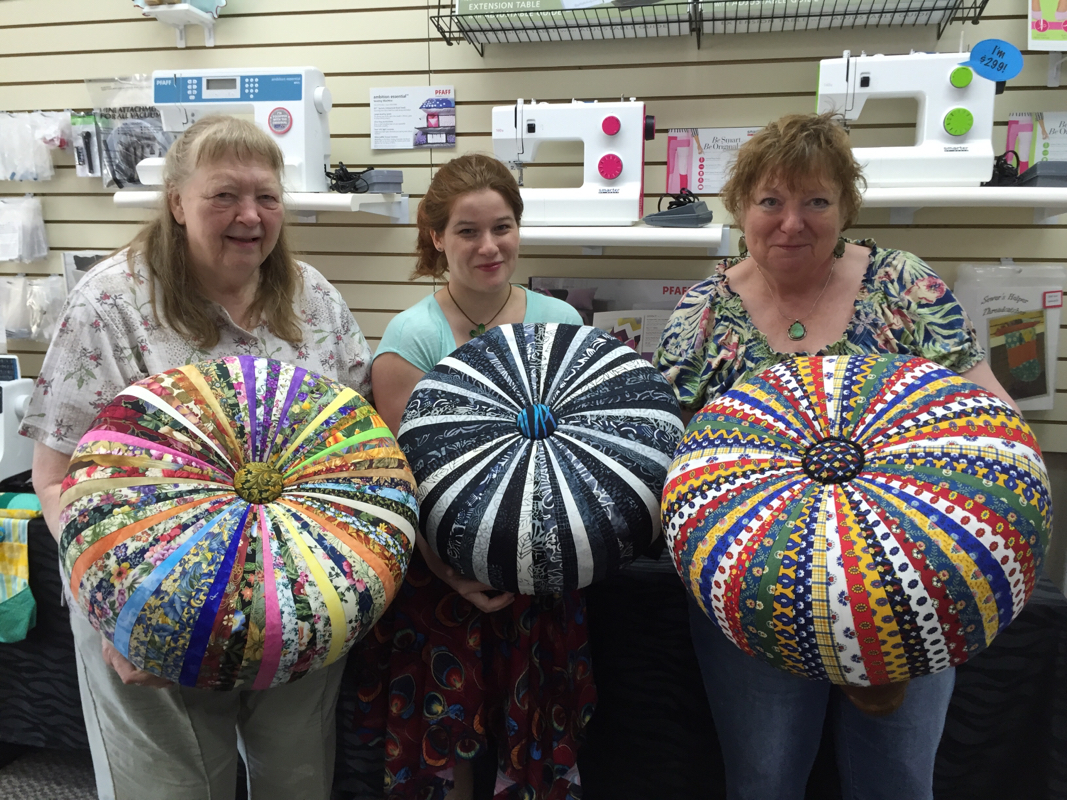
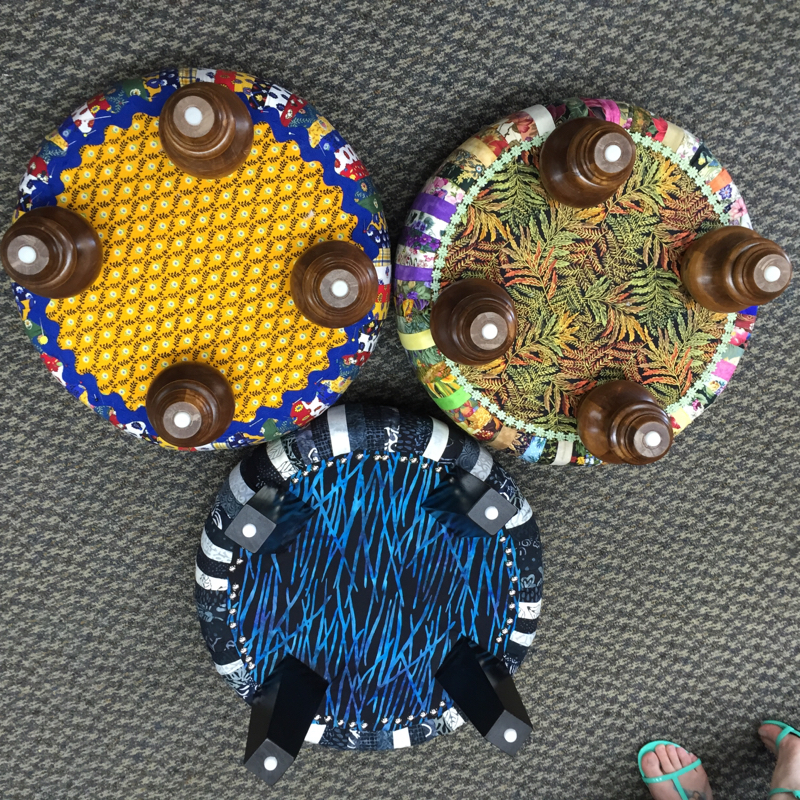
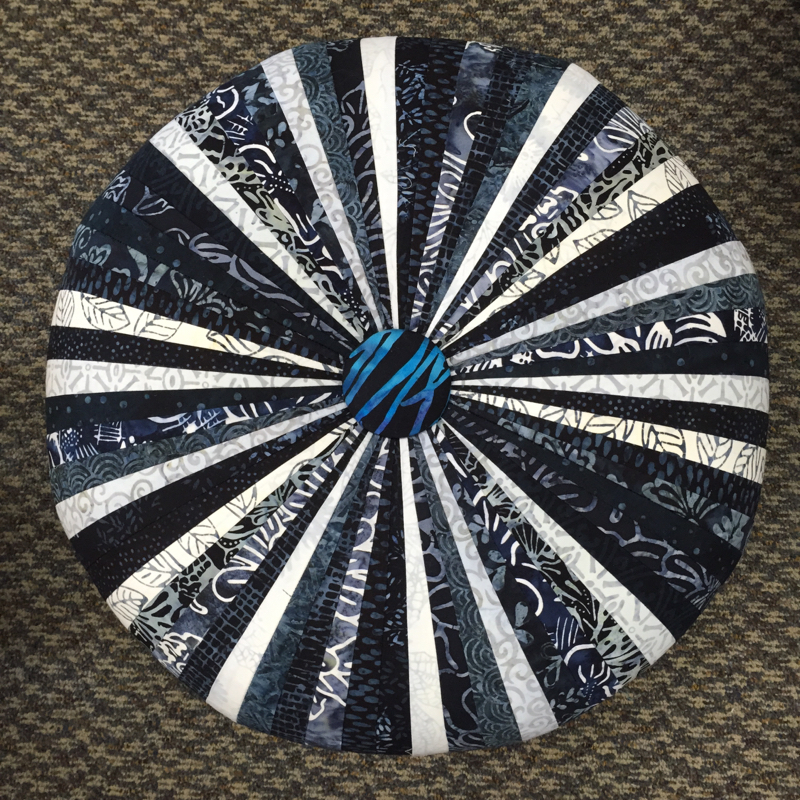


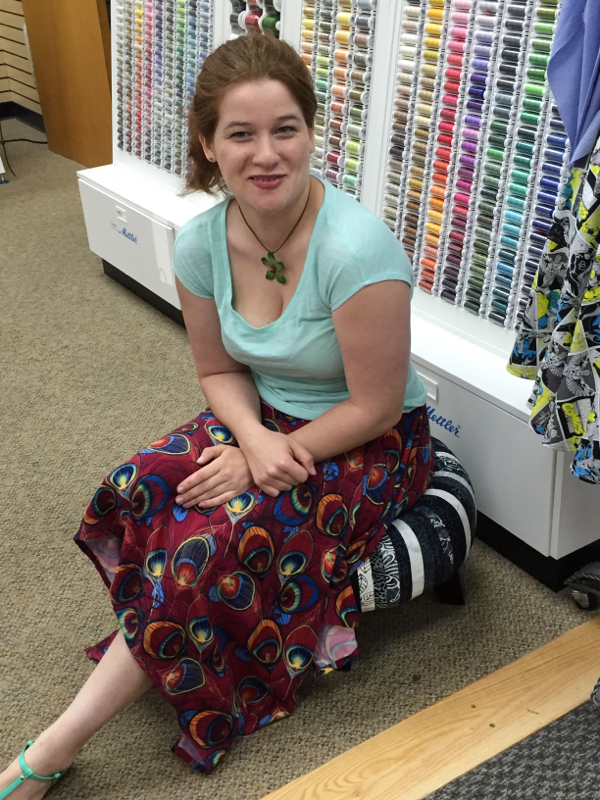
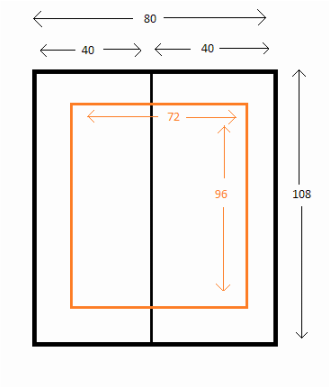


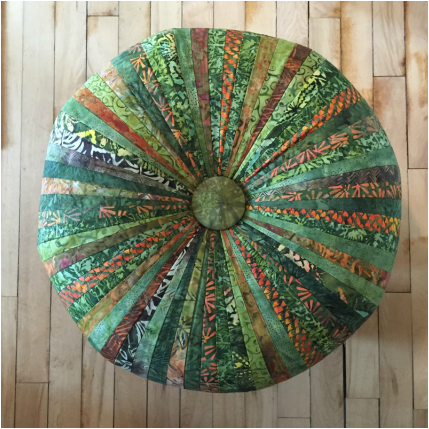
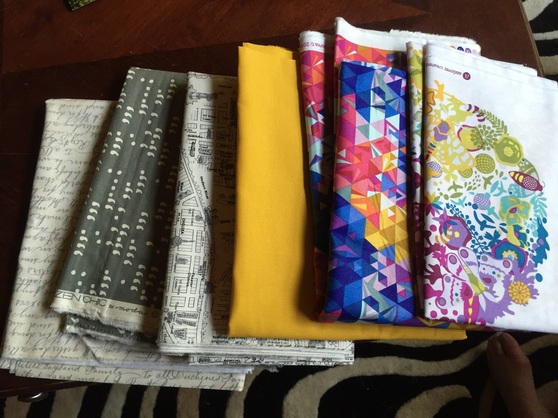
 RSS Feed
RSS Feed